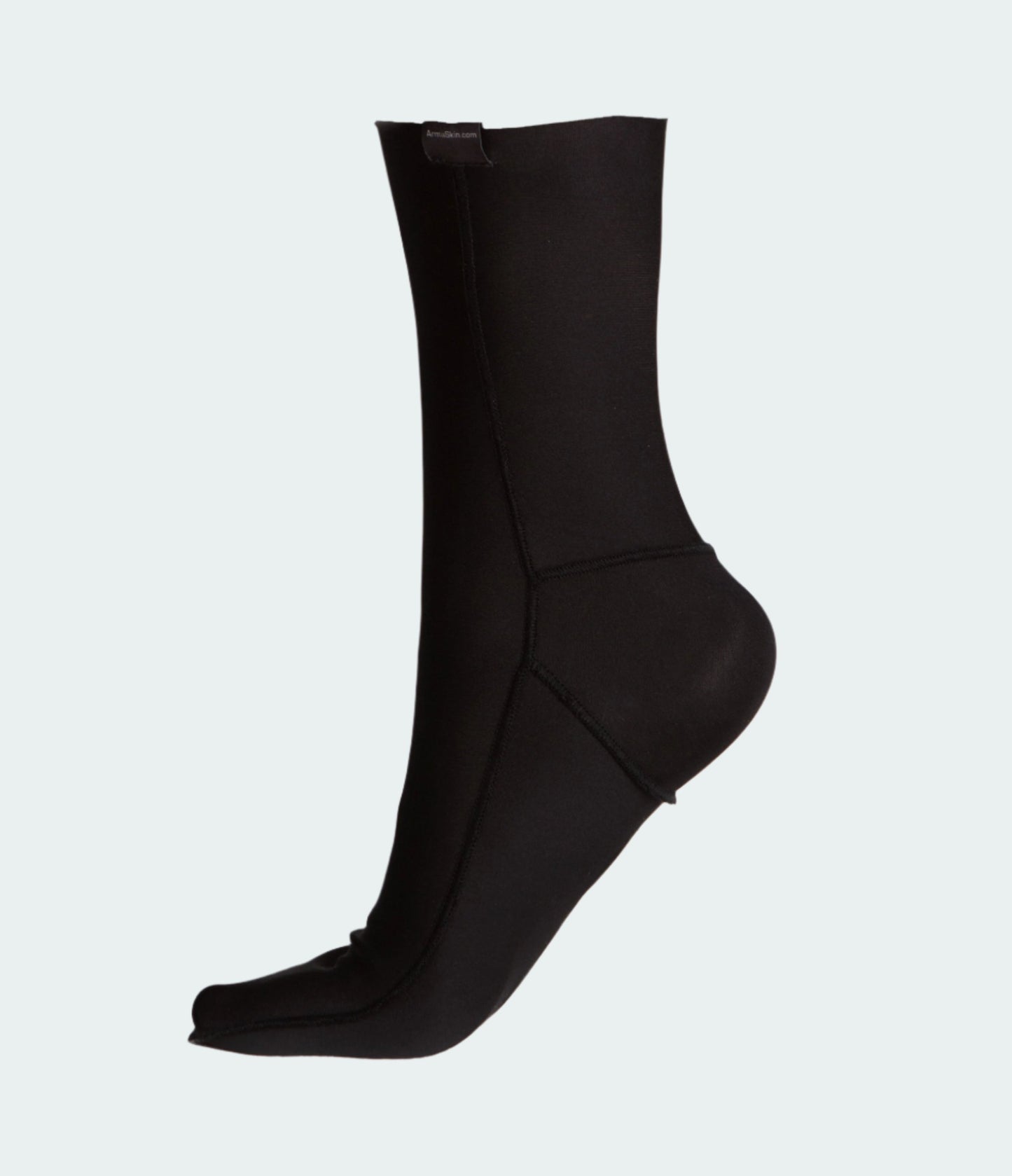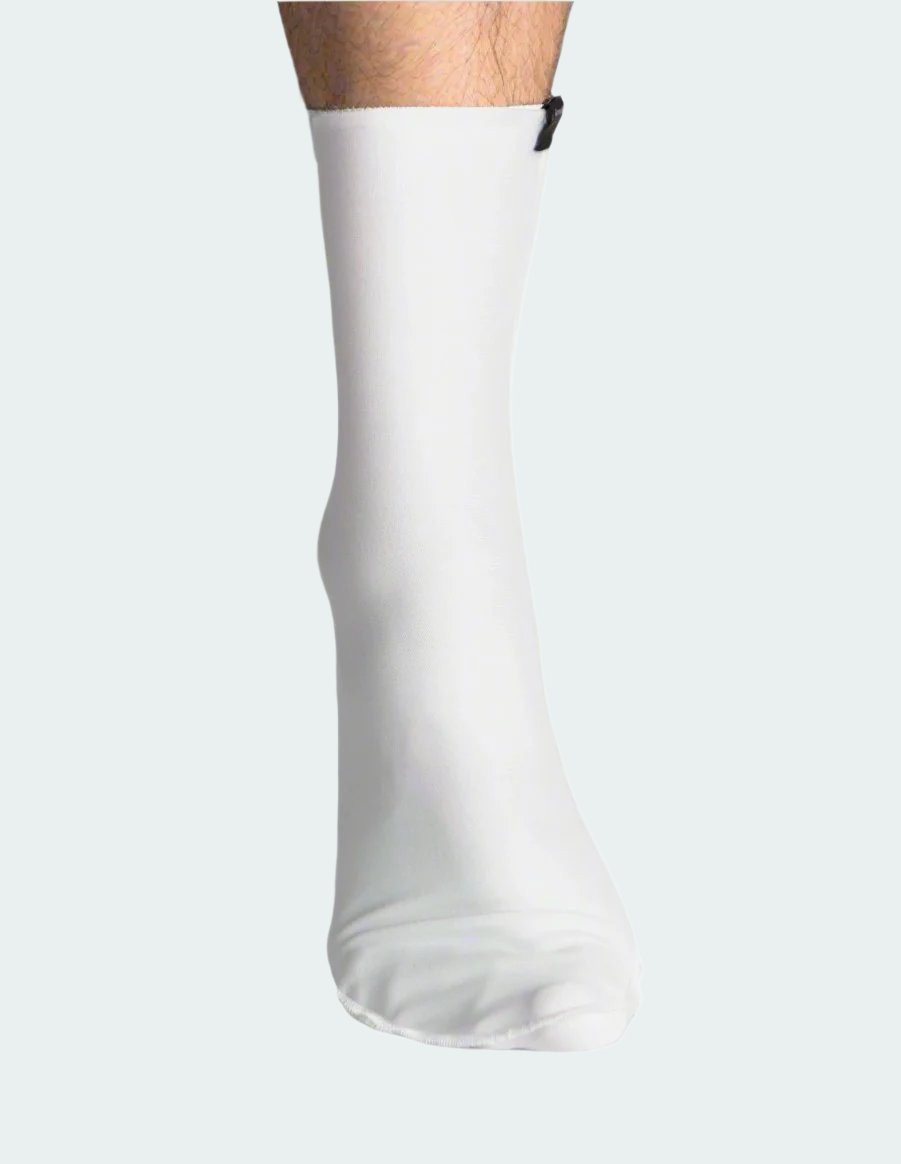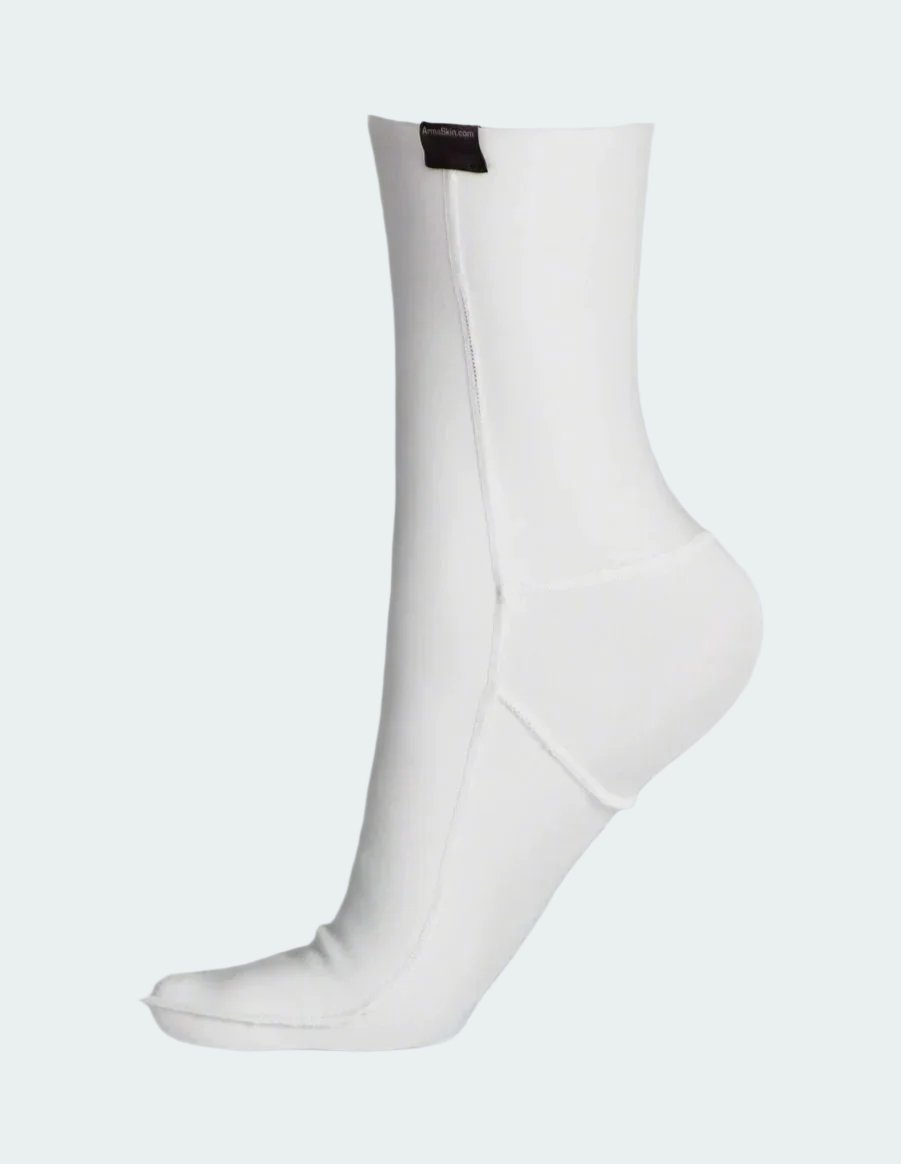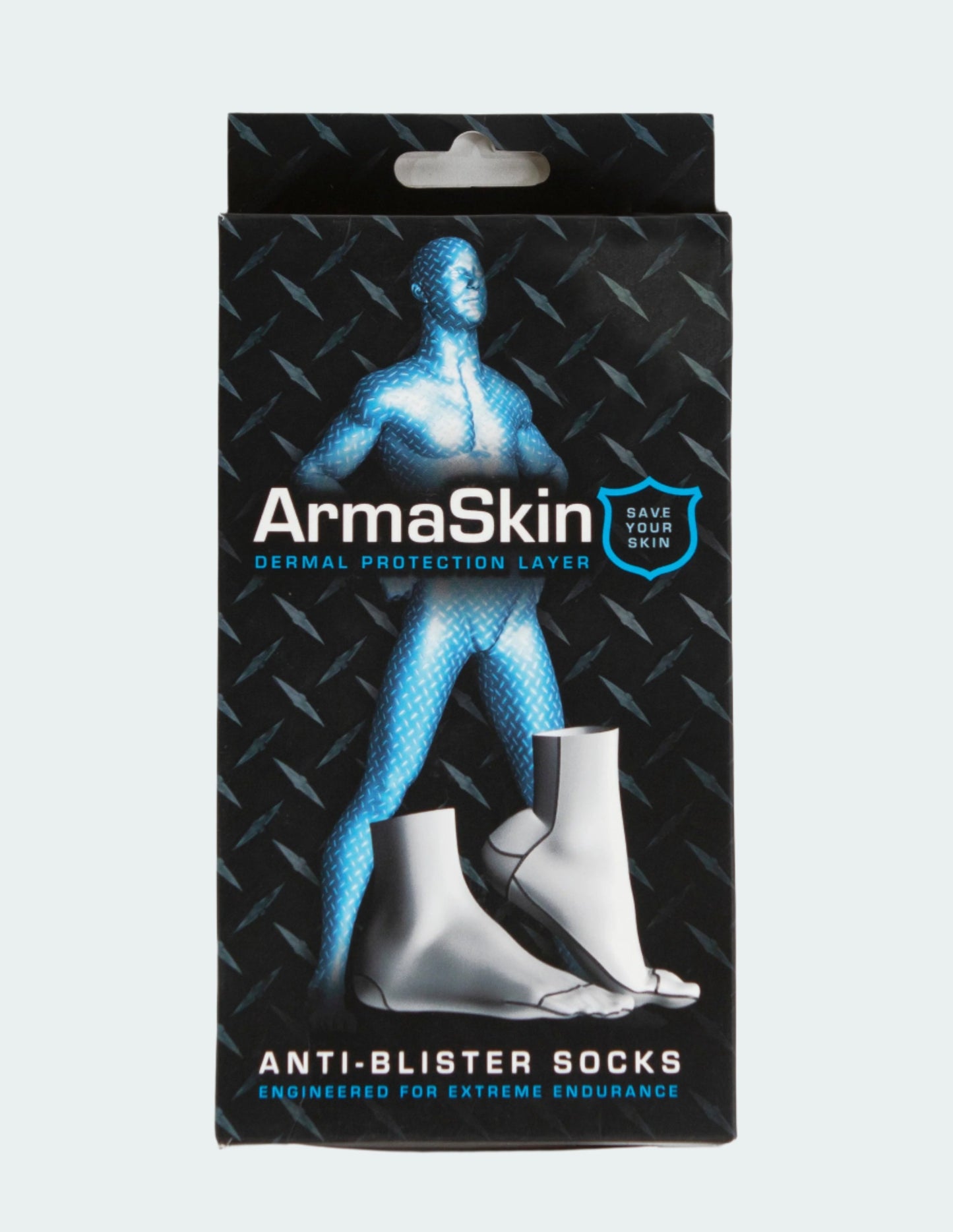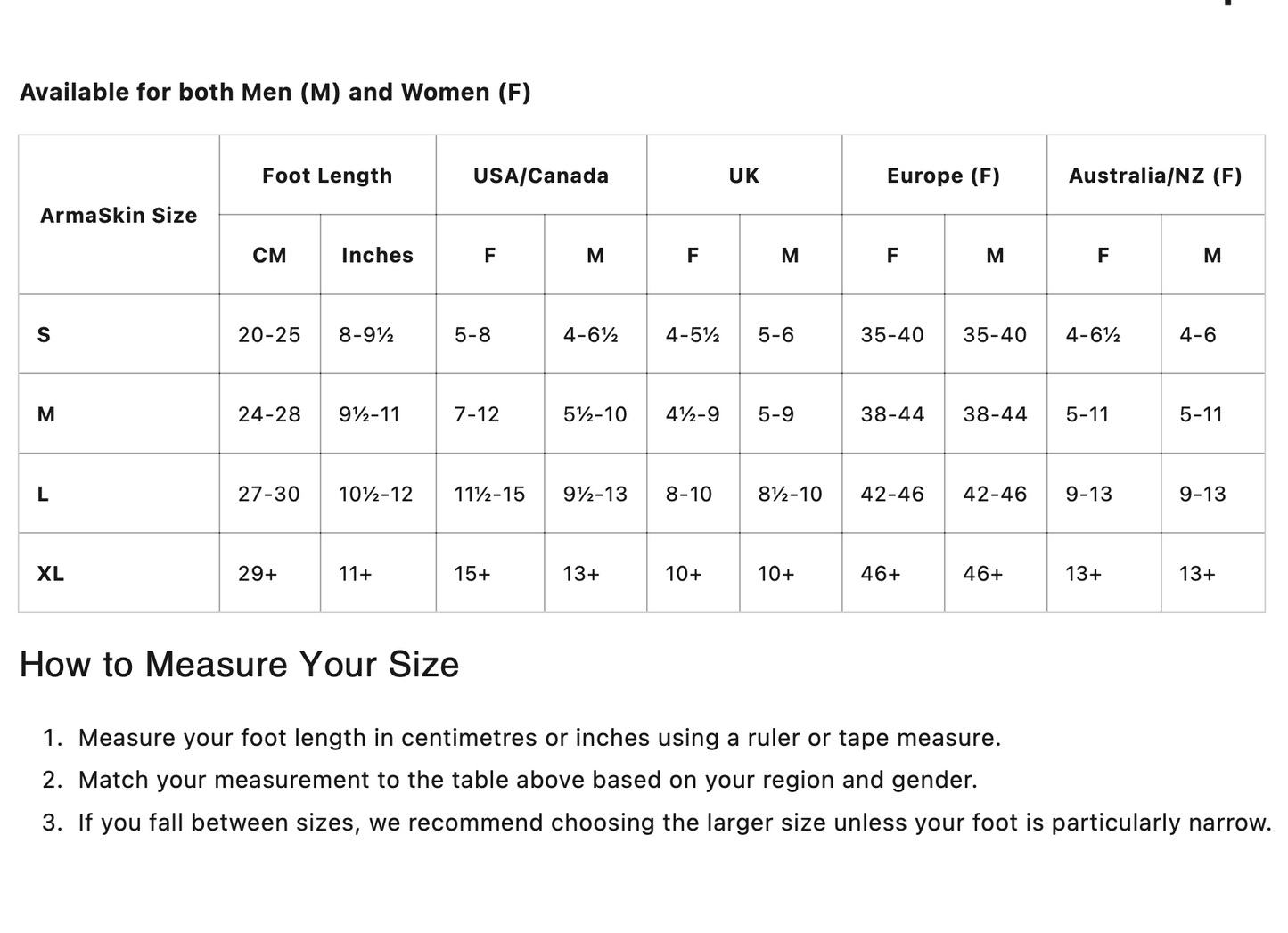If you’ve ever had a blister on your foot halfway through a hike, a run, or even a long shift at work, you know how something so small can stop you. That hot, stinging sensation creeps in, and suddenly, every step is a chore. So naturally, the big question becomes: What can I wear on my feet to prevent blisters?
There are a few options out there—some better than others—but the key is finding something that works consistently, not just in ideal conditions. As someone who’s tried everything from duct tape to double socks, I’ll tell you straight: nothing compares to ArmaSkin anti-blister socks for all-day, all-weather, all-terrain protection.
But let’s walk through all your options, what works, what doesn’t, and why ArmaSkin stands out as the smartest choice to stop blisters before they start.
1. Why Do We Get Blisters in the First Place?
Before we can talk about solutions, let’s understand the problem.
Blisters are caused by friction, moisture, and heat. When your skin rubs repeatedly against your sock or shoe, the upper layers begin to separate, and fluid fills the gap—creating that painful bubble we all know and hate.
Contributing factors include:
-
Poorly fitting footwear
-
Sweat-soaked socks
-
Rough materials
-
Repetitive motion (e.g., hiking, running)
-
Pressure points from seams or debris in shoes
The best way to prevent blisters? Wear gear that reduces friction, manages moisture, and fits like a glove.
2. Common Footwear Options for Blister Prevention (And How They Stack Up)
Let’s look at the gear you might consider wearing on your feet—and whether it helps prevent blisters.
a. Standard Cotton Socks
We all have them. But when it comes to blister prevention, cotton socks are one of the worst offenders.
Why they don’t work:
-
Cotton holds onto moisture, which softens skin and increases friction.
-
They stretch and bunch, causing hot spots.
-
They dry slowly, leaving you in damp discomfort for hours.
Verdict: Avoid them. They might be fine for lounging but not for activity.
b. Wool or Merino Wool Socks
Merino wool is a big step up. It’s naturally breathable, helps regulate temperature, and offers some moisture control.
Pros:
-
Soft, naturally odour-resistant
-
Decent at wicking sweat
-
Good for cold or variable climates
Don’t Let Blisters Slow You Down!
Discover the ultimate solution with ArmaSkin Anti-Blister Socks. Designed with advanced friction-reducing technology, these socks keep your feet dry, comfortable, and blister-free – no matter the challenge.
Shop Now
Cons:
-
It can still retain moisture in very humid conditions
-
Doesn’t actively reduce friction
Verdict: Better than cotton, but still not a guaranteed fix—especially for high-intensity movement.
c. Double-Layer Socks
These are designed to reduce friction between sock layers rather than between your skin and the sock.
Pros:
-
Reduces some surface-level friction
-
A budget-friendly attempt at blister control
Cons:
-
Can be bulky
-
Prone to bunching and slippage inside boots or shoes
-
Sweat still builds up
Verdict: A decent effort, but inconsistent results. Still doesn’t solve moisture or movement properly.
d. Tape, Moleskin, and Blister Patches
Some swear by taping their feet or applying blister plasters as a preventative measure.
Pros:
-
Good for short-term spot protection
-
Targeted use on high-friction areas
Cons:
-
Time-consuming to apply
-
Adhesive can fail when wet
-
Doesn’t offer full-foot protection
Verdict: Handy in a pinch, but not ideal for long hikes, races, or everyday use.
e. Vaseline or Lubricants
Some runners apply petroleum jelly to reduce friction.
Pros:
-
Reduces friction initially
Cons:
-
Messy
-
Wears off quickly
-
Can cause sock slippage and hold moisture against skin
Verdict: Short-term help at best. Not a long-term solution—and not compatible with ArmaSkin.
f. ArmaSkin Anti-Blister Socks
Now we’re talking. ArmaSkin socks are a different approach. They’re not just another sock—they’re a purpose-built blister prevention system, worn next to the skin.
Why they work so well:
-
The inner surface grips the skin, eliminating rubbing
-
Friction occurs between sock layers, not your foot and shoe
-
Moisture-wicking materials pull sweat away fast
-
Breathable design keeps your feet dry and cool
-
Snug, non-slip fit stays in place for hours
Whether you’re hiking, running, rucking, or walking around a city for a full day, ArmaSkin keeps you protected.
Verdict: Best-in-class for blister prevention. Designed by athletes, worn by soldiers, loved by hikers.
3. What About Footwear? Does That Play a Role?
Absolutely. While socks are your first line of defense, your shoes still matter.
To help prevent blisters:
-
Choose the right size. Too tight = pressure. Too loose = movement.
-
Break in new shoes gradually.
-
Wear moisture-wicking socks (like ArmaSkin liners) under cushioned outer socks if needed.
-
Remove debris immediately. A tiny stone can cause a huge blister.
Your shoes and socks should work together. That’s why ArmaSkin is designed to function within your existing setup—it doesn’t require changing your favourite boots or runners.
4. How to Use ArmaSkin for Maximum Protection
Getting the most from your ArmaSkin anti-blister socks is easy, but there are a few tips that’ll ensure they work their magic:
✔️ Wear them against your skin
They’re liner socks, so they go on first. Add a thin or cushioned sock over the top if desired.
✔️ Keep your feet clean and dry before putting them on
This enhances the skin-grip function and ensures a snug fit.
✔️ Wash after each use
They’re easy to wash and fast to dry quickly. Just rinse and air-dry overnight.
✔️ Use them for training and long days out
The more consistent your protection, the less likely you’ll develop hot spots or rubbing over time.
5. Real Stories from the Blister-Free Community
Thousands of runners, hikers, and military personnel swear by ArmaSkin. Here’s what they’re saying:
“I used to get blisters every time I hit the trails. Since switching to ArmaSkin, I haven’t had a single one—even on 30km days.” — Laura, hiker.
“Tried moleskin, tape, different socks. Nothing worked until I found ArmaSkin. It’s the only thing that keeps me blister-free during marathons.” — Chris, ultrarunner.
“Deployed overseas and doing 20k steps a day in boots. ArmaSkin is the only liner that keeps my feet intact.”— Jay, infantry.
You don’t need to suffer through trial and error. These socks are tested, trusted, and built to work.
6. Additional Tips for Preventing Blisters on Your Feet
Alongside wearing the right gear, here are a few extra ways to stay blister-free:
-
Keep toenails trimmed to avoid pressure and internal friction
-
Dry your feet thoroughly before putting on socks
-
Alternate shoes if possible to avoid repetitive wear patterns
-
Use foot powders or drying agents if you’re prone to heavy sweating (but only if not wearing ArmaSkin)
-
Train your feet with shorter distances before jumping into multi-day hikes or long races
Blister prevention is about layering the right choices—not just one magic trick. Of all those choices, your socks are the foundation.
7. Final Thoughts: What Should You Wear to Prevent Blisters?
When it comes down to it, the best thing you can wear on your feet to prevent blisters is a combination of smart, moisture-managing, friction-reducing socks—and nothing fits that brief like ArmaSkin anti-blister socks.
Cotton? Too risky. Tape? Temporary. Thick socks? Hit-or-miss. But with ArmaSkin, you’re not guessing—you’re protecting.
Say goodbye to blisters and hello to adventure. Explore the ArmaSkin anti-blister sock collection and find the perfect fit for your feet.
-
Learn more about ArmaSkin and how we’re reinventing blister prevention.
-
Dive into our full blister-prevention-socks page for expert tips.
-
Browse our range of anti-blister socks for hiking, running, military use, and more.
-
Discover our anti-blister liner socks to pair with your favorite footwear.








